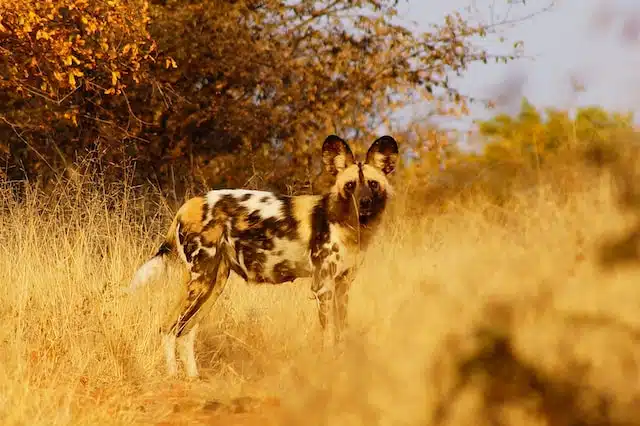The world’s most endangered mammals include some of Earth’s most iconic and beloved creatures. These animals are at risk of extinction for various reasons, including habitat loss, hunting, and climate change.
There is an abundance of endangered animals worldwide, but some are more at risk than others. Here’s a list of the 13 most endangered mammals, many of which you will probably be familiar with – but some might surprise you!
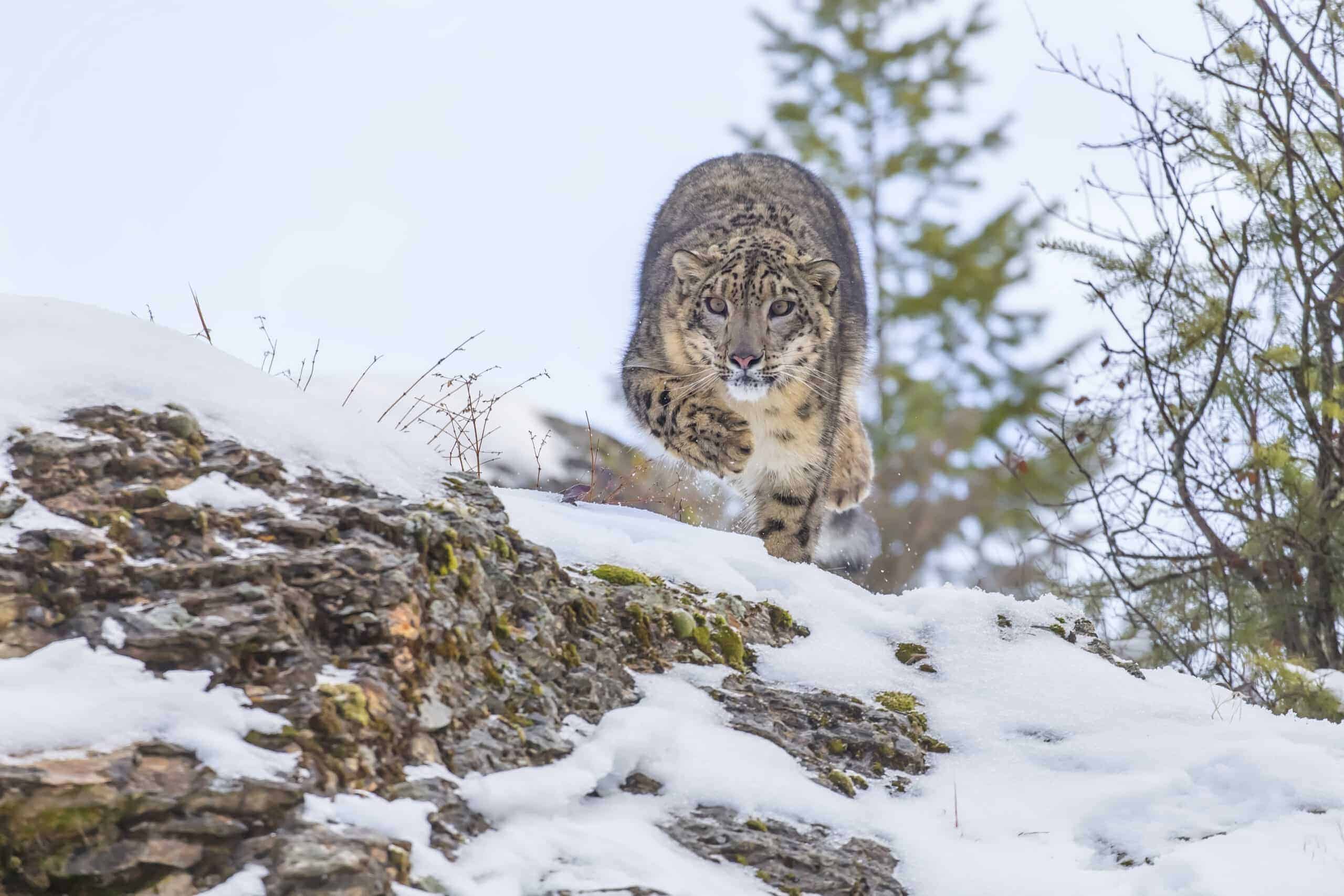
The IUCN lists the world’s most endangered mammals and includes some surprising species.Were you aware that the vaquita, a petite porpoise inhabiting the Gulf of California, teeters on the edge of extinction? To secure their enduring existence for generations to come, we must prioritize the preservation of their habitats and put an end to the hunting of these creatures for their valuable body parts, which are in high demand for traditional medicine. Furthermore, the rapid destruction of their habitats presents a looming threat. Without immediate intervention, we risk witnessing the irreplaceable loss of these remarkable beings.
#1. Vaquita
It is a shy and tiny porpoise that is found in northern California and is included in the list of endangered mammals. Estimates suggest that less than 150 vaquitas remain in the wild, and the population continues to decline at an alarming rate. Several factors have contributed to the vaquita’s decline, but the primary threat is incidental capture in gill nets.
Gillnets are large nets which catch huge amounts of fish, but they also entangle and drown marine mammals like dolphins and porpoises. To save the vaquita from extinction, the Mexican government has implemented several conservation measures, including banning gillnet fishing in their habitat and establishing a protected area for the species. However, enforcement of these measures has been difficult. Unless more is done to protect them, the vaquita may be gone forever.
#2. Javan Rhinoceros
The Javan rhinoceros is a rhinoceros species that once roamed much of Southeast Asia. Today, they are critically endangered animals, with only around 60 individuals remaining in the wild. The main threat to the Javan rhino is habitat loss; clearing forests for agriculture and other development leaves the rhinos with no place to live.
Although they are currently in danger there is still hope. Numerous organizations take initiatives to protect them. With continued effort, we can save the Javan rhino from extinction.
#3. Bornean Orangutan
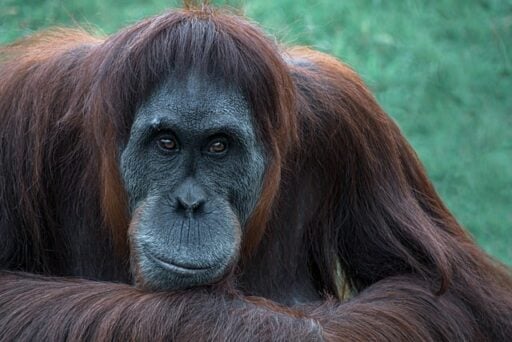
The Bornean orangutan is among the most endangered creatures on Earth. Habitat loss is the main threat to them due to deforestation. Due to the high demand for timber and agricultural land, humans eradicate forests at an alarming rate, leaving little habitat for these animals to live in.
It is essential to support organizations working to conserve their habitat and stop the illegal wildlife trade. Doing so can help ensure that the Bornean orangutan does not become extinct.
#4. Mountain Gorilla
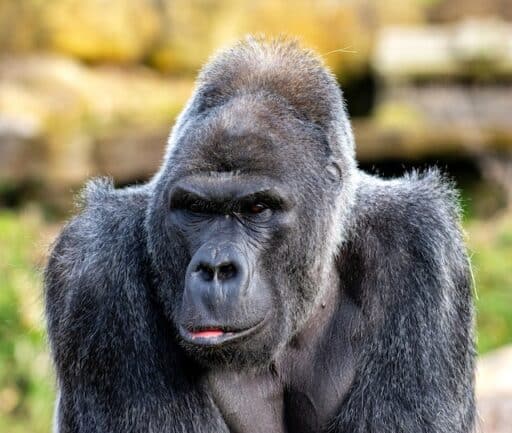
The mountain gorilla is the largest living primate. An average male weighs about 400 pounds, and the female about 250 pounds. Males have an arm span of 7 to 8 feet. They are vegetarian and mostly eat bamboo shoots, leaves, and stems but also fruits and roots.
Groups often split up during the day to forage for food, but then come back together at night to sleep in a nest made of vegetation and branches.
Although they are naturally shy, humans have encroached on their habitat over the years, leading to contact with humans, which has often been fatal for the gorillas. Poaching, human disease, deforestation, and war conflict all contribute to the decline of mountain gorillas, making them endangered.
Many organizations are working to help protect these beautiful animals, but more needs to be done to ensure their survival in the future. We can protect them by raising awareness.
#5. Snow leopard
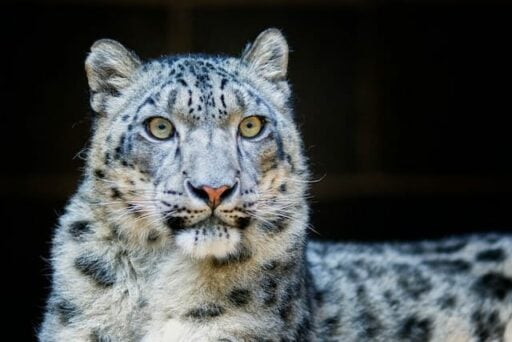
Their primary threat to this apex predator is habitat loss as well, which puts them on the list of endangered mammals. The snow leopards’ population is drastically declining as their habitat continuously is destroyed. It is causing the snow leopard population to decline. Another threat to snow leopards is poaching. Snow leopards are hunted for beautiful fur and sold on the black market.
Furthermore, the snow leopard is listed as endangered in order to protect this magnificent animal. One way to help is by supporting organizations working to conserve the snow leopard’s natural habitat.
#6. Black-footed ferret
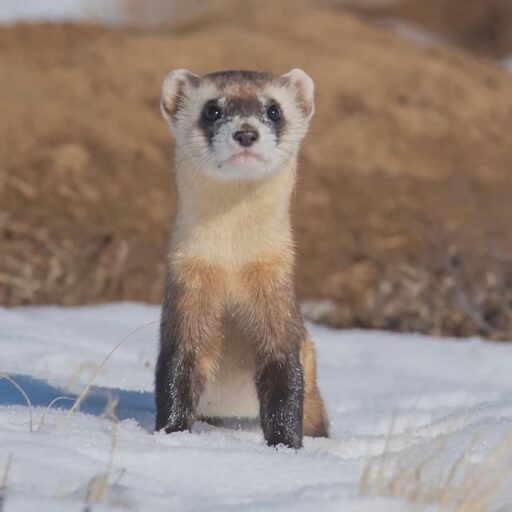
The black-footed ferret is a tiny carnivorous mammal native to central North America. The species is now endangered. Reasons for this decline include habitat loss, disease, and hunting. Only 1,000 black-footed ferrets remain in the wild today. The black-footed ferret face the greatest threat from habitat destruction.
The animals rely on shortgrass prairies for their primary habitat, but this ecosystem has been declining for many years. According to the National Wildlife Federation, more than 85% of the original area of native grassland in the Great Plains has been lost to development and agriculture. This loss of habitat has led to a decrease in prey species, such as prairie dogs, which the ferrets depend on for food.
These animals are particularly susceptible to canine distemper and sylvatic plague. This type of disease is a huge threat to these species. Finally, hunting has also contributed to the decline of black-footed ferrets. Although the animals are not typically hunted for food, their fur was once highly valued. As a result, fur-traders extensively trapped and killed black-footed ferrets for their pelts during the 19th and early 20th centuries.
Despite these threats, their population has significantly improved in recent years due to captive breeding and reintroduction programs. In captivity, ferrets are protected from predators and diseases and have an abundance of food available. These efforts have helped to increase the number of black-footed ferrets in the wild, and have given this endangered species a chance at recovery.
#7. African Wild Dog
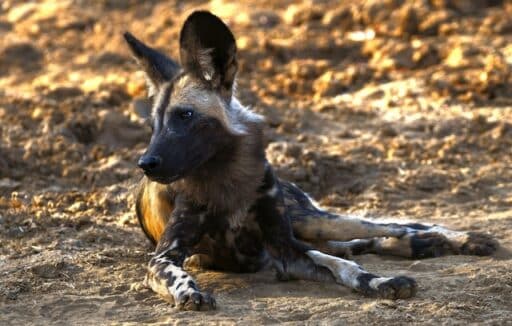
The African wild dog (Lycaon pictus) is a large, charismatic canid found only in Africa. The species was once found all over the continent, but it has suffered a significant decline and is now found only in small areas of its former range.
The species is intensely social and territorial, with packs establishing and defending distinct home ranges. Within these home ranges, African wild dogs use various habitats, including open savanna, miombo woodland, montane forest, and swamp. The species is an opportunistic predator, preying on a wide variety of prey items depending on availability. However, wildebeest calves are the primary prey of African wild dogs in many areas.
Although once widespread across much of Africa, the African wild dog is now extinct in 25 countries and exists as a fragmented population in just six countries: Botswana, Ethiopia, Mozambique, South Africa, Tanzania and Zimbabwe. The threat to its survival is habitat loss and fragmentation due to human development.
Competition with other predators (such as lions and hyenas), disease transmission from domestic dogs and direct persecution also contribute to the decline of this species. However, with appropriate conservation measures African wild dog populations can recover. There are numerous examples of successful reintroductions of populations into suitable habitats.
For example, the Nykerenkal drafted population in South Africa has increased from just 20 individuals in 1992 to over 150 individuals in 2016! Given time and space, the African wild dog can thrive – it just needs a little support!
#8. Primates
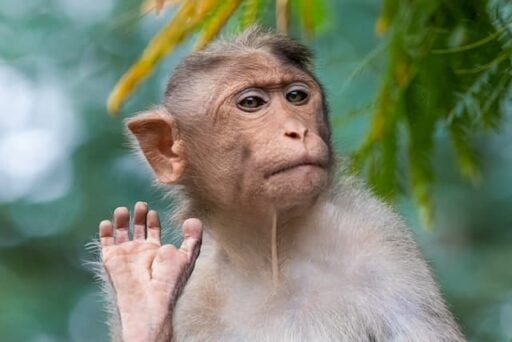
Over 260 species of primates exist worldwide, ranging in size from the tiny pygmy marmoset to the large gorilla. Although they live in various habitats, including rainforests, woodlands, and savannas, many primates are under threat due to habitat loss and human hunting. As our closest living relatives, primates are important to the world’s biodiversity. They play an important part of ecosystems; many being keystone species.
For example, howler monkeys help to disperse seeds throughout the rainforest, while chimpanzees serve as seed dispersers for certain African plants. In addition, some primate species are important cultural icons, such as the mountain gorilla, which is symbolic of the country of Rwanda.
Given the importance of primates to the world’s ecosystem and cultures, we must work to protect them. We can do so by increasing public awareness about the importance of these animals. By working together, we can help ensure that these amazing creatures have a future in our world.
#9. Giant Panda
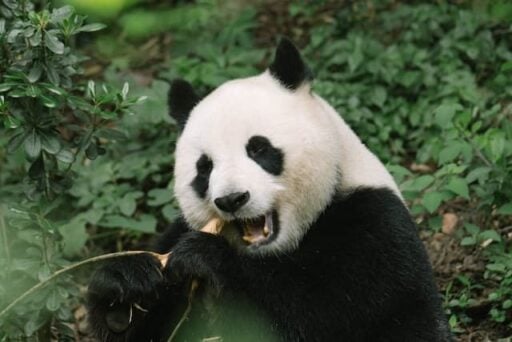
The Giant Panda is a bear that comes from China. Their fur coat makes them easy to spot: large, distinctive black patches on their round bodies, around their eyes, and over their ears. Adult giant pandas typically grow four to six feet long and weigh up to 275 pounds. Despite their imposing size, giant pandas are gentle vegetarians, and their diet consists mostly of bamboo shoots and leaves. Unfortunately, bamboo is not very nutritious, so giant pandas have to spend much time eating it to meet their needs. They have a lower metabolic rate than any other mammal.
The giant panda’s future is uncertain. The basic threat to them is habitat loss. The human population in China continues to grow, and more and more land is being developed for housing and agriculture. This development destroys the bamboo forests that giant pandas need for food and shelter. In addition, the Chinese government has been logging the country’s forests at an unprecedented rate in recent years. This logging also destroys bamboo forests and reduces the available habitat for giant pandas. It is estimated that only 1,600 giant pandas remain in the wild.
To save the giant panda from extinction. One way to help is to support organizations working to preserve the species’ habitat. Another way to help is to donate money to fund research on improving the nutritional value of bamboo so that giant pandas can get the nutrition they need from another food source. Finally, you can spread awareness about the importance of preserving this amazing animal by sharing information about them.
#10. Indo-Pacific Finless Porpoise
The Indo-Pacific finless porpoise, inhabiting the vast marine ecosystems of the Indo-Pacific, stands out for its unique feature: the absence of a dorsal fin, a trait uncommon among other porpoises and dolphins. These remarkable creatures, the smallest of all cetaceans, typically measure 5-7.5 feet in length and weigh between 88 and 132 pounds. Their dark gray coloring, adorned with white patches on their bellies and sides, serves as a natural camouflage against potential predators like sharks.
Regrettably, the primary threat facing Indo-Pacific finless porpoises stems from entanglement in fishing nets, with tuna fisheries often unintentionally capturing them as bycatch. Furthermore, they confront challenges related to habitat loss and pollution. Consequently, the International Union for Conservation of Nature (IUCN) has designated the Indo-Pacific finless porpoise as an “endangered” species.
We can protect these mammals by adapting in different ways. One way is to support responsible fishing practices that prevent their entanglement in nets. We can also help by reducing our consumption of fish and seafood products. Finally, we can urge our governments to enact laws and regulations that help to protect this endangered species. Taking these steps can help ensure that these unique creatures remain a part of our world for generations to come.
#11. North Atlantic Right Whale
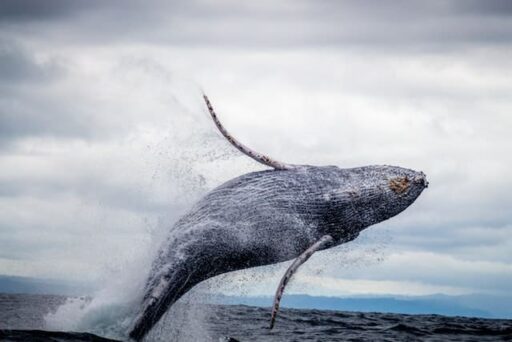
The North Atlantic Right Whale is considered not only one the most endangered whales, but also one of the most endangered mammals on Earth. Their numbers have been severely reduced by whaling, and they now face various threats such as: ship strikes, entanglement in fishing gear, and habitat loss.
On the Red List of Threatened Species, Conservation International labels them as critically endangered. Despite these difficulties, there is cause for optimism. The right whales have been shielded from further harm by recent measures.
For example, speed limits have been introduced for ships passing through their migratory routes, and new fishing regulations have reduced the risk of entanglement. With continued effort, it may be possible to save this iconic species from extinction.
#12. Sumatran Orangutan
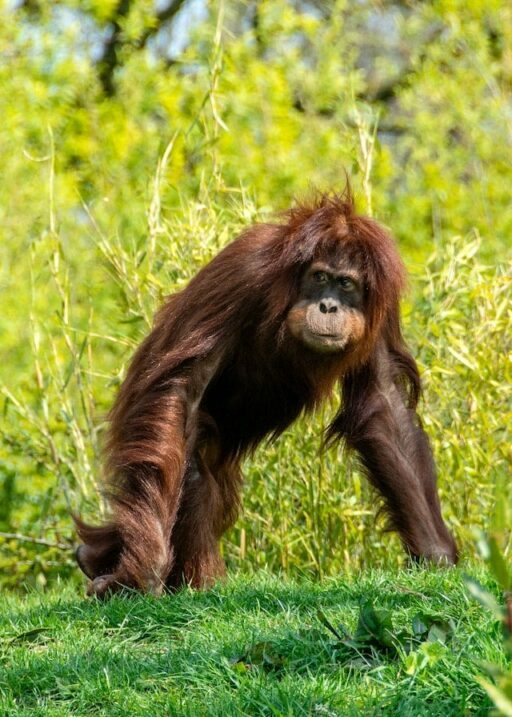
According to estimations less than 7,000 of these primates to remain in the wild, and their numbers are declining rapidly due to habitat loss and hunting. The primary threat to Sumatran Orangutans is deforestation, as their forest homes are being destroyed for timber, palm oil, and other agricultural development.
Furthermore, Human beings like to hunt these mammals due to their body parts and meat, which are used in traditional medicine. To save this species from extinction, it is critical that their habitat is protected and that hunting ceases. Conservation efforts include establishing protected areas and working with locals to change their perceptions of orangutans. With the right protection and conservation measures, we can ensure that the Sumatran Orangutan does not disappear from our planet.
#13. Asian Antelope
The Asian antelope, which includes four different species of Gazelle, is yet another endangered mammal. Though they are still found in many parts of Asia, their numbers have declined rapidly due to habitat loss and hunting. Asian antelope are important members of their ecosystems, and their loss would have a devastating impact on the balance of nature.
We must protect their habitats by setting aside land for wildlife conservation or by creating safe corridors between habitat areas. Further, banning hunting or regulating the number of animals that can kill each year would aid immensely. Finally, public education is important to raise awareness about the plight of the Asian antelope and the importance of conserving this species. We can save the Asian antelope from extinction with everyone’s cooperation.
Preserve These Mammals by Reducing the Impact on the Environment
It’s no secret that humans have profoundly impacted the environment. Our actions have led to the extinction of species, the destruction of natural habitats, and the pollution of air, water, and soil. However, there are things we can do to reduce our impact and help preserve endangered mammals for future generations.
One way to do this is to support conservation efforts by donating to organizations working to protect endangered species or participating in local conservation projects. Making decisions that are more environmentally friendly in our day-to-day lives is another way to reduce our impact.
For example, we can choose to eat less meat, which would help to reduce greenhouse gas emissions, or we can reduce our consumption of single-use plastics. We can make a big difference for the environment and endangered mammals through small sacrifices from our side.
The Final Verdict
The 13 most endangered mammals we’ve highlighted will become extinct if we don’t take steps to protect them. To save these animals and their habitats, we must collaborate globally. You can help by learning about the plight of these creatures and spreading the word to your friends and family. If you live near one of these endangered species, consider volunteering or donating to organizations working to conserve them.
We hope you found this article interesting and will help us save these amazing animals! Learn more about endangered animals from icier parts of our planet by reading about the 16 Most Endangered Animals on the North Pole.
- Death by Tiger at Drive-Through Zoo - April 16, 2024
- Elephant Crosses River Filled with Hippos - April 16, 2024
- The Most Adorable Footage of Baby Wolves in Minnesota - April 15, 2024

